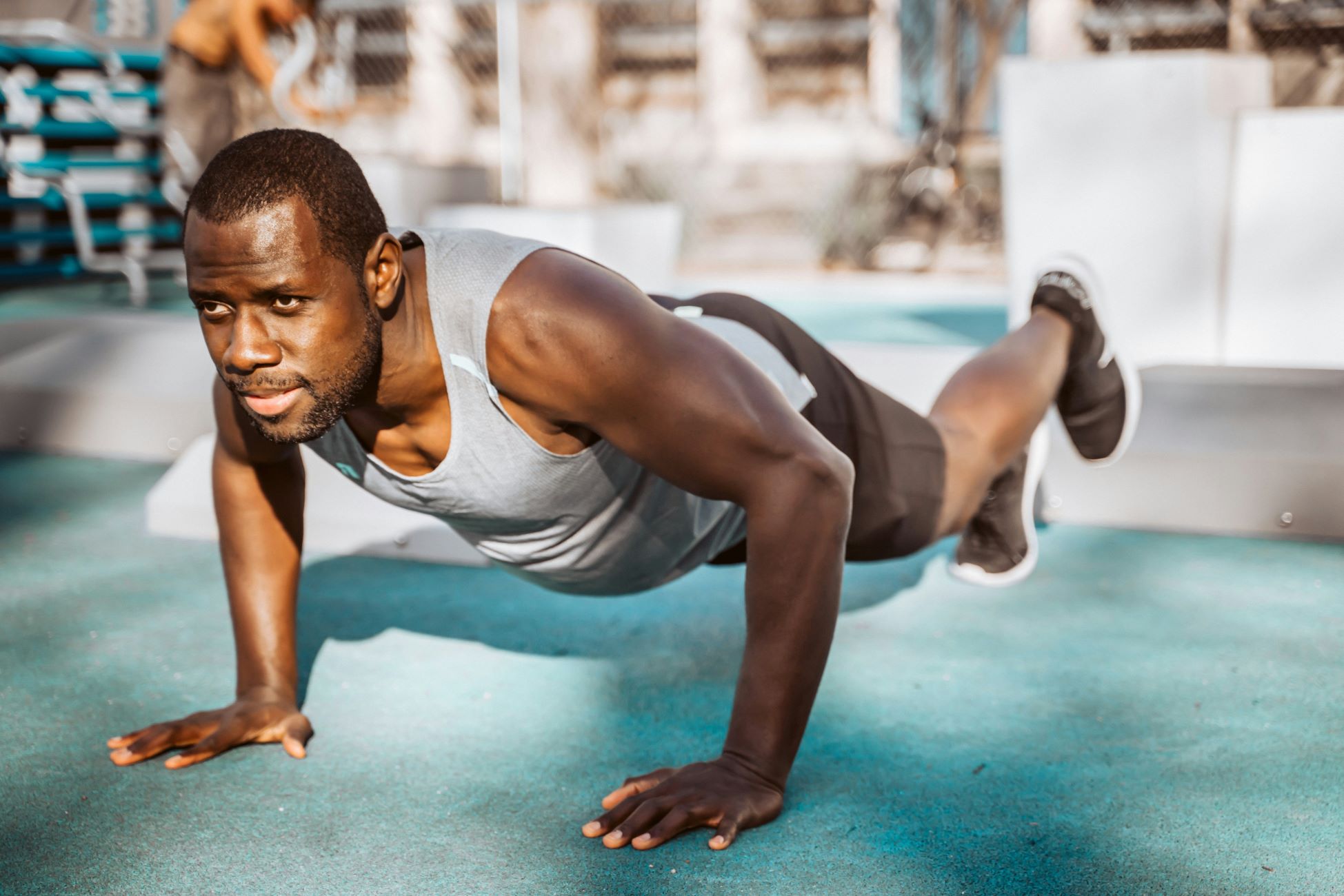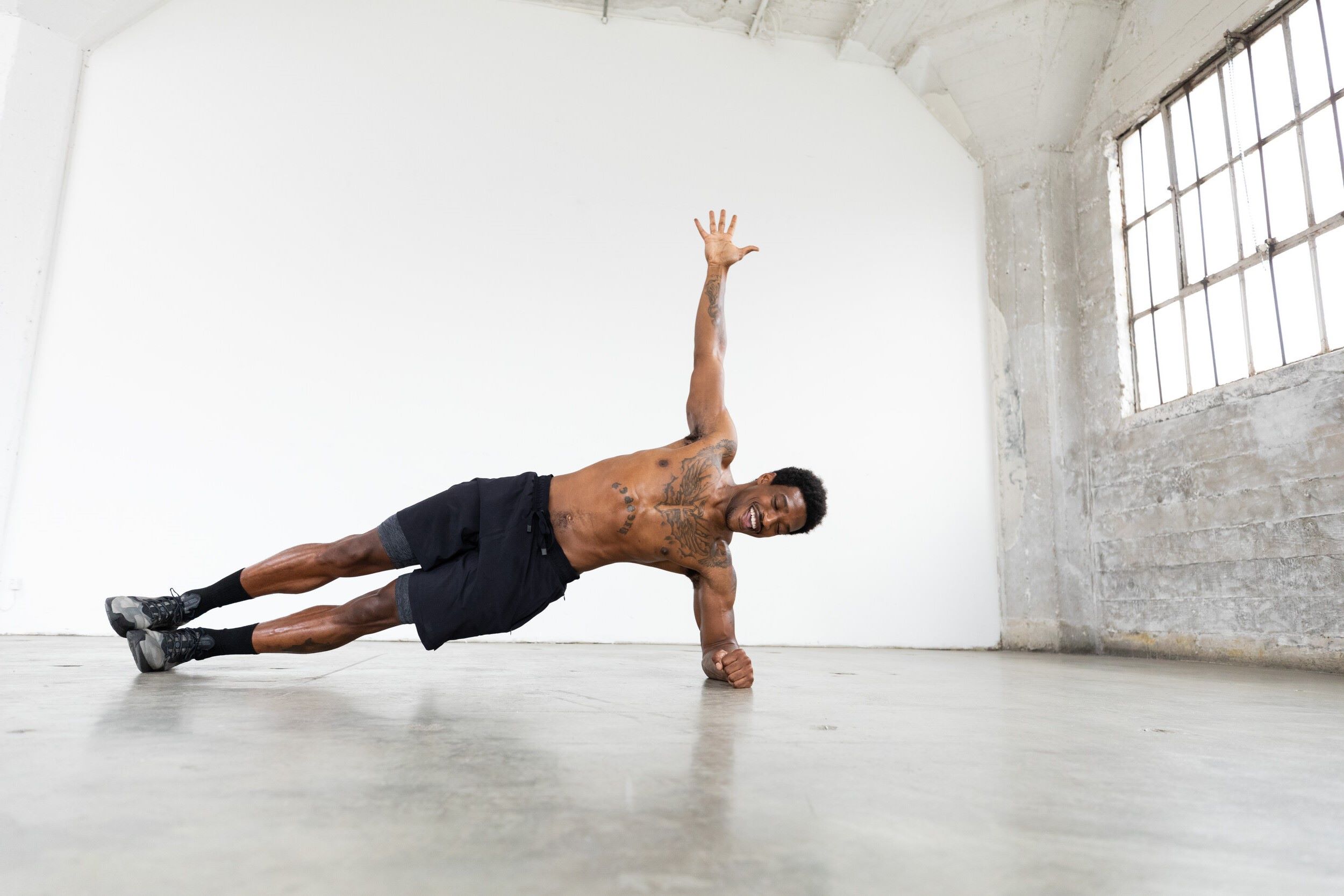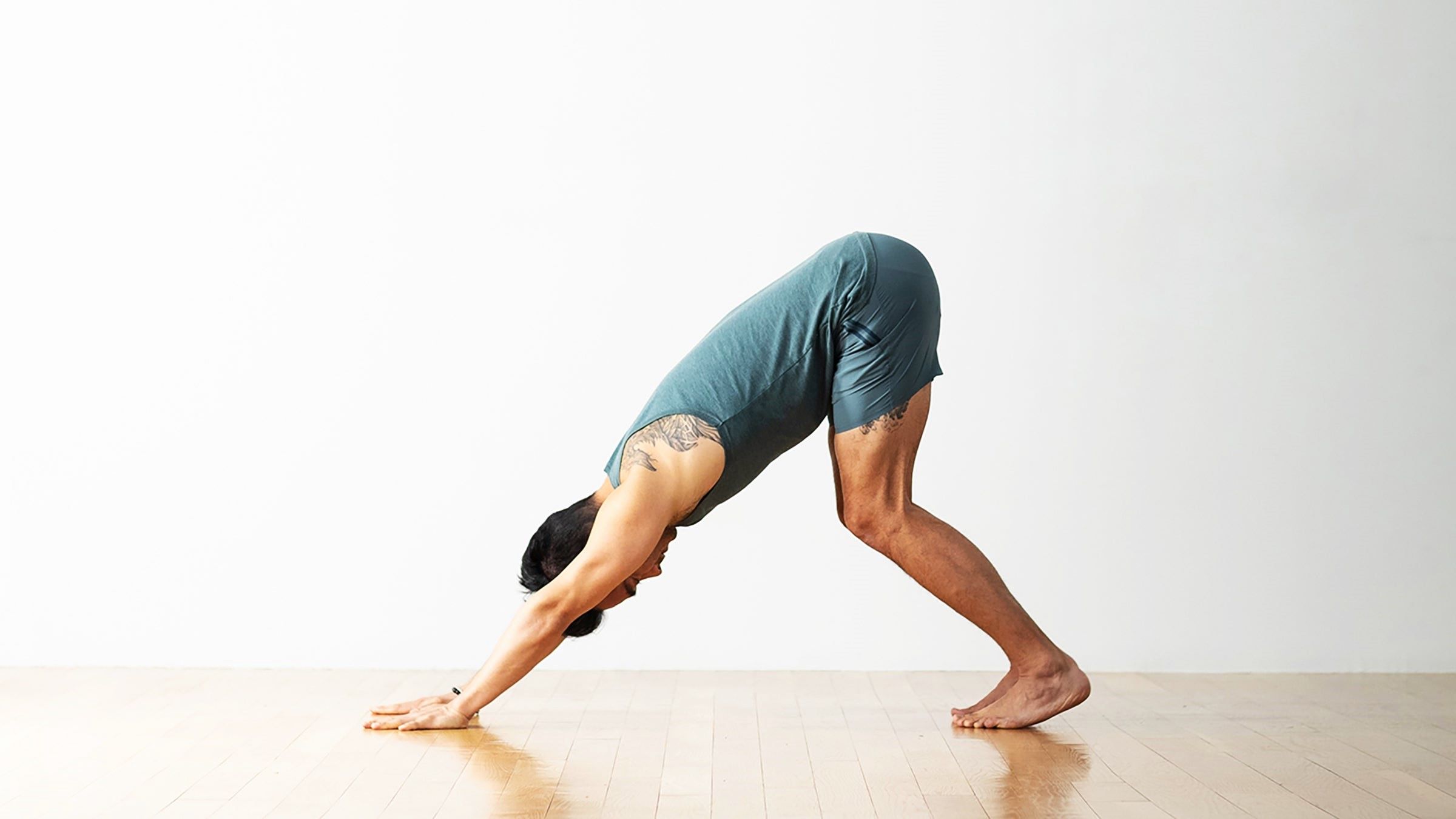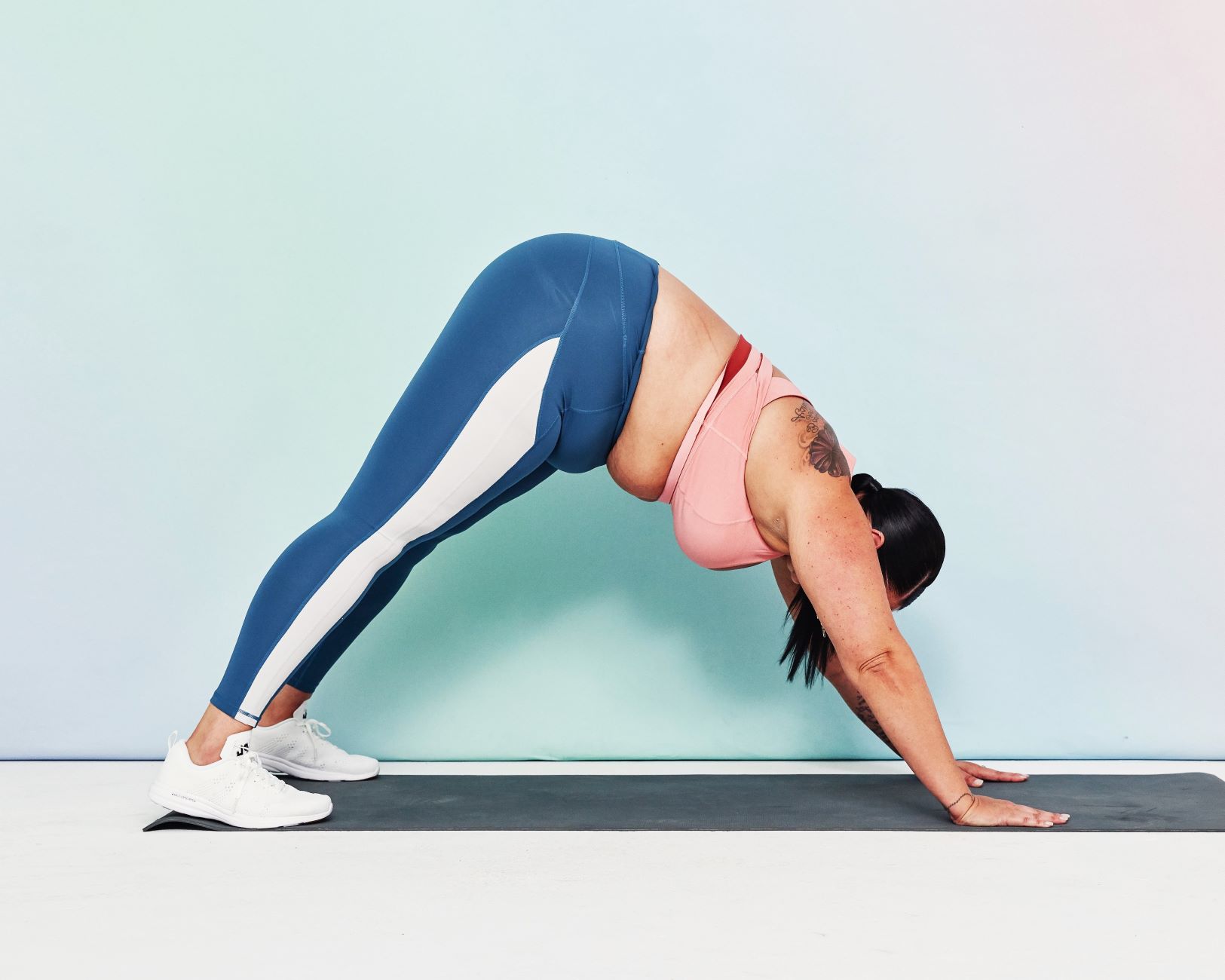Home>Training & Techniques>The Importance Of Proper Plank Form And Regular Practice


Training & Techniques
The Importance Of Proper Plank Form And Regular Practice
Published: March 2, 2024
Learn the importance of proper plank form and regular practice with our expert training & techniques. Maximize your results and avoid injury.
(Many of the links in this article redirect to a specific reviewed product. Your purchase of these products through affiliate links helps to generate commission for Therunningadvisor.com, at no extra cost. Learn more)
Table of Contents
The Benefits of Proper Plank Form
Proper plank form is essential for maximizing the benefits of this deceptively simple yet highly effective exercise. When executed correctly, planks engage multiple muscle groups, making them a cornerstone of any comprehensive fitness routine. Here are the key benefits of maintaining proper plank form:
-
Core Strengthening: Planks target the entire core, including the rectus abdominis, transverse abdominis, obliques, and lower back muscles. By maintaining a neutral spine and engaging the core muscles, proper plank form effectively strengthens these muscles, leading to improved posture and stability.
-
Improved Posture: As the core muscles become stronger, they play a pivotal role in supporting the spine and promoting better posture. Proper plank form encourages the development of a strong and stable core, which can alleviate strain on the lower back and contribute to a more upright posture.
-
Enhanced Balance and Stability: Engaging the core, glutes, and leg muscles in the correct alignment during a plank exercise helps improve overall balance and stability. This is particularly beneficial for athletes and individuals seeking to enhance their performance in various physical activities.
-
Reduced Risk of Injury: By strengthening the core and stabilizing the spine, proper plank form can reduce the risk of back injuries and strain. The improved muscle strength and endurance gained from regular plank practice can also contribute to better overall body mechanics, lowering the likelihood of injury during physical activities.
-
Increased Metabolism: Planks engage multiple muscle groups simultaneously, leading to a boost in metabolic rate. This can aid in weight management and contribute to overall calorie expenditure, making planks a valuable addition to any fitness regimen.
-
Enhanced Mental Fortitude: Holding a plank requires mental focus and determination. By practicing proper plank form regularly, individuals can cultivate mental resilience and discipline, which can extend beyond the realm of fitness and positively impact other areas of their lives.
Incorporating proper plank form into a regular exercise routine can yield significant benefits, making it a valuable addition to any fitness regimen. By focusing on maintaining correct alignment and engaging the targeted muscle groups, individuals can harness the full potential of this foundational exercise.
Read more: The Importance Of Proper Posture In Running
Common Mistakes in Plank Form
Achieving proper plank form is crucial for reaping the full benefits of this exercise. However, several common mistakes can compromise the effectiveness of planks and even lead to potential injury if not addressed. Understanding and avoiding these pitfalls is essential for maximizing the impact of plank exercises. Here are some of the most prevalent mistakes in plank form:
-
Sagging or Arched Back: One of the most common mistakes during a plank is allowing the lower back to sag or arch excessively. This misalignment places undue stress on the spine and diminishes the engagement of the core muscles. It is essential to maintain a neutral spine by engaging the abdominal muscles and keeping the back flat throughout the duration of the plank.
-
Dropping the Hips: Allowing the hips to drop below the level of the shoulders during a plank can significantly reduce the effectiveness of the exercise. This mistake often occurs when the core muscles are fatigued, leading to improper alignment and decreased muscle engagement. Maintaining a straight line from the head to the heels is crucial for maximizing the benefits of the plank.
-
Protracted Shoulders: Allowing the shoulders to hunch forward or collapse toward the chest can compromise the stability of the plank and place excessive strain on the shoulder joints. Proper plank form involves actively engaging the shoulder blades by drawing them down and back, which helps stabilize the upper body and prevent unnecessary strain.
-
Head Position: Incorrect head positioning, such as craning the neck upward or allowing it to hang down, can lead to neck strain and detract from the overall effectiveness of the plank. The head should remain in line with the spine, with the gaze directed toward the floor, to maintain proper alignment and minimize strain on the neck muscles.
-
Unengaged Core: Failing to actively engage the core muscles is a common mistake that diminishes the effectiveness of the plank. Proper plank form requires intentional contraction of the abdominal muscles, as well as the muscles of the lower back and glutes, to create a stable and aligned position.
-
Improper Breathing: Neglecting to maintain steady and controlled breathing during a plank can hinder performance and reduce the engagement of the core muscles. It is essential to breathe deeply and rhythmically, focusing on maintaining a consistent breathing pattern throughout the duration of the exercise.
By recognizing and addressing these common mistakes in plank form, individuals can optimize the effectiveness of this foundational exercise and reduce the risk of injury. Emphasizing proper alignment, muscle engagement, and breathing techniques is key to harnessing the full benefits of plank exercises and achieving tangible improvements in core strength and overall fitness.
How Regular Practice Improves Core Strength
Regular practice of plank exercises is instrumental in enhancing core strength and stability, making it a fundamental component of a well-rounded fitness regimen. The sustained engagement of core muscles during planks leads to significant improvements in strength, endurance, and overall functional fitness. Here's a detailed exploration of how consistent practice fosters the development of core strength:
Muscle Engagement and Endurance
Engaging in regular plank practice challenges the core muscles, including the rectus abdominis, transverse abdominis, obliques, and erector spinae, leading to enhanced muscle endurance. As individuals consistently perform planks, these muscles adapt and strengthen, allowing them to sustain the body's weight for longer durations. This increased endurance not only contributes to improved core strength but also translates to better performance in various physical activities and sports.
Progressive Overload and Adaptation
Regularly incorporating planks into a workout routine facilitates progressive overload on the core muscles. As individuals strive to hold the plank position for longer periods or experiment with advanced variations, such as side planks or plank with leg lifts, the muscles are subjected to increasing levels of resistance. This progressive challenge prompts the muscles to adapt and grow stronger over time, leading to noticeable improvements in core strength and stability.
Functional Core Activation
Consistent practice of planks fosters the activation of deep stabilizing muscles within the core, promoting functional strength that extends beyond aesthetic benefits. These deep muscles play a crucial role in supporting the spine, pelvis, and overall posture, contributing to enhanced stability and reduced risk of injury during daily activities. By regularly engaging these muscles through plank exercises, individuals can cultivate a strong and resilient core that supports optimal movement patterns and overall physical well-being.
Improved Posture and Spinal Stability
The sustained engagement of core muscles during regular plank practice contributes to improved posture and spinal stability. As the core becomes stronger and more resilient, it provides essential support for the spine, reducing the likelihood of slouching and promoting an upright and aligned posture. This not only enhances physical appearance but also minimizes the risk of back pain and discomfort associated with poor posture, leading to improved overall spinal health.
Enhanced Coordination and Balance
Regularly practicing planks enhances coordination and balance by requiring the simultaneous engagement of multiple muscle groups. As individuals strive to maintain proper form and alignment during planks, they develop a heightened sense of body awareness and control. This improved coordination and balance extend beyond the realm of fitness, positively impacting daily activities and reducing the risk of falls and injuries.
Incorporating regular plank practice into a fitness routine is a powerful strategy for developing core strength and stability. By consistently challenging the core muscles through sustained engagement and progressive overload, individuals can experience tangible improvements in muscle endurance, functional strength, posture, and overall physical performance. This underscores the pivotal role of regular practice in fostering the development of a strong and resilient core.
Incorporating Planks into Your Workout Routine
Incorporating planks into your workout routine can yield significant benefits for overall strength, stability, and functional fitness. Whether you are a seasoned athlete or new to fitness, integrating planks into your regimen can enhance your core strength and contribute to improved performance in various physical activities. Here's a comprehensive guide on seamlessly integrating planks into your workout routine to maximize their impact.
Read more: The Importance Of Aquajogging For Runners
Start with Proper Form
Before incorporating planks into your workout routine, it is crucial to prioritize proper form and alignment. Begin by mastering the basic plank position, ensuring that your hands are directly beneath your shoulders, and your body forms a straight line from head to heels. Engage your core muscles, glutes, and legs to maintain stability and alignment throughout the exercise. By starting with a strong foundation of proper form, you can optimize the effectiveness of planks and minimize the risk of injury.
Gradual Progression
As you integrate planks into your workout routine, consider implementing a gradual progression strategy to challenge your core muscles and promote continuous improvement. Start with shorter durations, such as 20-30 seconds, and gradually increase the duration as your strength and endurance improve. Additionally, experiment with advanced variations, such as side planks, plank leg lifts, or plank with arm raises, to introduce progressive overload and target different muscle groups within the core.
Consistent Integration
Consistency is key when incorporating planks into your workout routine. Aim to include planks in your workouts at least 2-3 times per week to experience noticeable improvements in core strength and stability. Whether you prefer to perform planks at the beginning, middle, or end of your workout, establishing a consistent schedule for plank exercises can lead to tangible results over time.
Complementary Exercises
Incorporating planks alongside complementary exercises can further enhance their impact on overall strength and stability. Pairing planks with exercises that target different muscle groups, such as squats, lunges, or upper body strength training, creates a well-rounded workout routine that promotes balanced muscle development and functional fitness. By strategically integrating planks with complementary exercises, you can optimize the synergistic effects of your workout regimen.
Listen to Your Body
As you integrate planks into your workout routine, it is essential to listen to your body and adjust the intensity and duration of the exercises accordingly. Pay attention to any signs of discomfort or strain, and modify the plank variations or duration as needed to ensure a safe and effective workout. By maintaining a mindful and adaptive approach, you can tailor your plank routine to align with your current fitness level and gradually progress over time.
Incorporating planks into your workout routine offers a versatile and impactful means of enhancing core strength, stability, and overall fitness. By prioritizing proper form, gradual progression, consistency, complementary exercises, and mindful adaptation, you can seamlessly integrate planks into your workouts and experience the transformative benefits they offer. Whether you prefer to perform planks as a standalone exercise or as part of a comprehensive workout routine, their inclusion can contribute to a stronger, more resilient core and improved physical performance.
Tips for Maintaining Proper Plank Form
Maintaining proper plank form is essential for maximizing the effectiveness of this foundational exercise and minimizing the risk of injury. Here are valuable tips to ensure that you uphold proper plank form throughout your workout sessions:
1. Alignment and Posture
Focus on aligning your body to form a straight line from your head to your heels. Avoid allowing your hips to sag or elevate above the level of your shoulders. Engage your core muscles, glutes, and legs to maintain a stable and aligned posture throughout the duration of the plank.
2. Shoulder Position
Pay attention to the position of your shoulders to prevent hunching or protraction. Actively engage your shoulder blades by drawing them down and back, which helps stabilize the upper body and reduces strain on the shoulder joints.
3. Core Engagement
Prioritize intentional contraction of the abdominal muscles, lower back, and glutes to create a stable and aligned position. Focus on maintaining a strong and active core throughout the plank, avoiding disengagement or excessive tension.
4. Breathing Technique
Maintain steady and controlled breathing throughout the plank exercise. Breathe deeply and rhythmically, avoiding breath-holding or shallow breathing, to support optimal muscle engagement and overall performance.
5. Head Position
Keep your head in line with your spine, with your gaze directed toward the floor. Avoid craning your neck upward or allowing it to hang down, as this can lead to neck strain and detract from the overall effectiveness of the plank.
6. Gradual Progression
Start with shorter durations and gradually increase the duration as your strength and endurance improve. Additionally, experiment with advanced variations, such as side planks or plank with leg lifts, to introduce progressive overload and target different muscle groups within the core.
7. Mindful Adaptation
Listen to your body and adjust the intensity and duration of the exercises as needed. Pay attention to any signs of discomfort or strain, and modify the plank variations or duration to ensure a safe and effective workout.
By incorporating these tips into your plank practice, you can maintain proper form, minimize the risk of injury, and optimize the benefits of this foundational exercise. Consistently prioritizing alignment, muscle engagement, and mindful adaptation will contribute to improved core strength, stability, and overall physical well-being.











